When I first saw these jars of minerals, I hadn't the faintest idea what they were for. I thought maybe the Old Man collected them for their brilliant colours. I know I would.
And then I found this journal which kind of explained everything. This is a journal about colour pigments used in ancient Persian miniature paintings. In the journal were drawings and handwritten notes explaining how these colour pigments were extracted from various minerals.
There was the obvious, like green from green earth, with footnotes on how the most famous deposits were found in mines located in Verona, Italy. Ro should be interested in this, I thought as I read on. So would Ewalina and Birgit and friends living in various parts of Europe because mines of the stones, celadonite and glauconite where green earth could be extracted were also found in Poland, Saxony and the Mendip hills of England.
The journal went on to give details about how orpiment gives you yellow, cinnabar produces red and charcoal, black.
A good many pages however, were devoted to the most prominent colour of them all, the one that in the medieval days, was described as a pigment more expensive than gold. It was the lapis blue or ultramarine.
The Old Man had kept a small quantity of his lapis lazuli stones in a metal chest, probably even under lock and key at one time. Now they lay abandoned, like the other jars of minerals. Yet, despite being forgotten, one could still see beneath the dust how the stones kept that special blue, famous for its brilliance, depth and luxury.
With the mural as testament, it was easy to appreciate the mystique surrounding that colour; especially in the context of Cennino Cennini's unreserved adulation which I also found in the journal:
Ultramarine blue is a colour illustrious, beautiful and most perfect, beyond all other colours; one could not say anything about it, or do anything with it, that its quality would not still surpass... Let some of that color, combined with gold, which adorns all the works of our profession, whether on wall or on panel, shine forth in every object.
My interest was piqued. What if I could do what many had failed to do? What if I could decipher Cennini's method and extract the blue of all blues, the purest, most genuine ultramarine from the lapis, like what the Old Man had obviously done?
Needless to say, I promptly forgot all the rules I had made before I returned to the house. It was more of the late nights, even more working, definitely all alone. It was also the embarking of one of my most exciting projects thus far.
































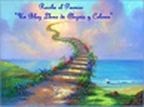























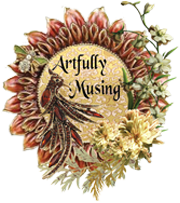






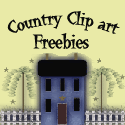





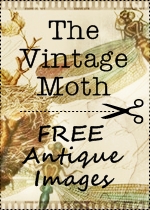


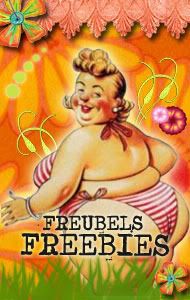















































































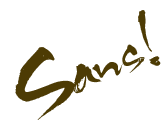

39 comments:
Oh, you know that this would make my head spin, Sans! First, the images, a place that would make me cry if I could enter it, I love Persian miniatures more than I can say, and have since I was a little girl. I always wanted the colors I used in my own small early paintings to glow this way. I tried, but modern pigments never sing as sweetly. And of course, you have explained exactly why. I read a wonderful book about the origins of pigment colors, and lapis, of course, was the most precious, jewels that glow like no other blue ever can. No modern blue can compete, and I can see that in the glorious mural. And red coming from crushed beetles, imagine! And I heard somewhere that green didn't appear in western literature until green stones were traded-that until there was an actual connection with Egypt, and an actual object, the color wasn't really understood. Amazing idea, isn't it? That we need to hold something in our hands to truly understand something and then create with it...
oh what a find! How lucky to not only discover the minerals but also the journal with all of his notes. My head is full of wondering what you will do now with your discovery!
Wonderful colour! Pigments always make me happy somehow. There is a pigment (wind)mill close to Amsterdam which mills such fabulous pigments. Don't know if they do ultramarine from Lapis Lazuli though. I should go there and see...
Gorgeous photos Sans!
I am always learning something new from your posts dear Sam. In the nicest way one can learn that is.:)
I have read what Amy wrote in comments and, funny thing, the lacker/shellack I used to finish my cradle is also made with the "help" of insects.;) Although they sell it(shellack not insects;)) in many colours(mine is ruby)it gives just a shine with a drop of a different shade.:)
It's a beautiful place - your house - I wish I could be that small to live there. I wouldn't change a thing.:)
I love the colour of your benches.:)
Hugs and kisses
Gosh I love the story about the pigment. Actually I recently saw an article in the danish magazine Jeanne D´Arc living (also published in english) showing an old french firm selling painters wax crayons and making them accordingly to very old percriptions, they had sooo many nuances, maybe 500. I will search for a link for you...hugs
Sans! your journal about the ancient Persian miniature paintings is the "bible" of all colors ;)! I really enjoyed the story and the miniatures you have made. The benches with their knots in the wood, love their color......but the ultramarine is my favorite (always been :D)!!
Hugs, Ilona
There is something about pigments that puzzles me. e.g. My daughter gave me some black looking pigment to paint under the glaze of over my ceramic pots. Although she assured me the color was blue I was very doubtful. Only after being fired I found out the pots where a glorious lapis lasuli color. It's wonderful you found the old man's journal to go by.
Lovely benches!
Hugs, Drora
La combinaciòn de colores es resplandeciente!
Adoro tus escenas.
Besos
Oh My!Oh MY! You Humble me, Dear Sans, with your exploration into the depths of color pigments! I have known for a very long time that the color Blue, that color I think I could not live without, was the most valuable color on earth... and hard to come by for the Medieval artists... and their tiny paintings using this pigment sparingly and only for the wealthy patrons.... Yet I have never looked into How it was made! Until Now... when with a few clicks of a button, I can follow YOU as you lead us into this Knowing with such fascinating descriptions! And Now where are we going? You are leaving me on the edge of my seat... I am in your house.... I see your Exquisite box of ancient lapis... your jars of Green earth and yellow ochre.... Your Book... Your Brushes.... Can I sit with you on your little rag covered stool and Learn everything there is to know about How these paintings were made? Perhaps then I will learn how to put just a little of it into my paintings... Yes, I am Humbled... and so Eager to follow you where you are going!
Ilona already put in words what I was thinking when reading your (do I have to say this at all?) once more beautiful post: The Bible of all colours! What a treasure you have found - and I have no doubt you will catch up with the King of Colour easily... Isn't it amazing what kind of "stuff" can be transformed into stunning colours, such as minerals, insects etc. - and of course plants. I had to think of a little town called Husum nearby at the shore of the North Sea - they're famous for an ocean of crocusses in the city park. Legend says that monks planted them for colouring books and clothes... And we have a tradition in southern Germany (especially Bavaria) of painting the houses - until today they mix their paint out of pigments. - I'm very curious what you'll achieve after breaking every rule... ;O)
Hugs
Birgit
Ah Sans, your touch turns the smallest detail into treasures! Love those jars of pigment and the well-loved book too.
I guess that you had very little sleep lately ;o)
So far so good if you'll keep enthralling us as you always do.
I love the history of pigments and I have a small collection of piments powders on a shelf but I never dared using them.
They look so powerfull and untamed,totally different from their relatives in a tube, and I don't know how to handle them but I love looking at the jars.
Now I am looking forward to the next leg of the trip you are taking us to
hugs, Ro
O Amy, you made me want to run out and buy a book on colours right now :). I wish I can lay my hands on this book by Anne Wall Thomas, Colours From the Earth-the artists' guide to collecting, preparing, and using them. It is a 1980 publication and has long been out of print. Apparently it shows how to locate, gather, and use natural earth pigments to create oil paints, watercolors, temperas, pastels, crayons, and inks.
Tomorrow I will go to the biggest bookstore in Singapore to see if I can find 2 other books" The Rarest Blue" and "A Perfect Red" and hopefully something on the origins of colours.
I have been interested in ancient colour pigments, natural dyes and just colours in general for a while now. That's why my projects are always bursting with colours.
It is fascinating and a little inconceivable what you said about green. How can it not be an obvious colour to have as part of one's palette? But that is with the benefit of hindsight of course. Kind of like the concept of zero, isn't it? how it came so late after numbers were introduced :).
Kim, I will let you in on a secret. Would you believe that up till the time I ended the post, I didn't quite know how I was going to link the story to what I had done next? :)
tus fotografías son siempre un tratado sobre el color ...no necesitas libros!
Que bonito Susan, tus trabajos son siempre estupendos y esas fotografías??? me encantan.....besos.
Oh Josje, you MUST go! What a treat that is to be able to visit a colour mill. When I was in Zaanse Schans last year, Rosanna and I went to that wonderful museum which showcase a few of your mills. It was unforgettable!
In Yilan, Taipei too, there was one of the few remaining crayon factory. We didn't have time to visit but I watched a documentary about the manufacturing process. Fascinating!
I think there will always be something in our colouring implements that will speak to the artist in each and everyone of us. :)
Ewalina, if you live in this house, you will build all its furniture with that wizard hands of yours. Each one unique and distinctly Ewa :) and very befitting of the Old Man's penchant for aesthetics. The house will love you like how you love it :).
I was reading the synopsis of this book called "A Perfect Blue" that is said to have been lost in the 14th century and then found again in the 19th century. It is supposedly a beautiful sky blue that is produced from the vomit of a particular type of snail. I don't know whether it is fiction or not. I hope to find the book tomorrow at the bookstore :).
Susanne!!! I will absolutely love to read all about this factory!
I have a pretty amazing source on colour pigments. If you click through the words "colour pigments" in the post, it brings you to this site called "pigments through the ages". It is a wealth of information on the origins of colours, even timeline of when they were discovered to be in use. there is even a section on the process of egg tempera paints.
Ilona :), it is hardly a bible but in that small world of the abandnoned house, yes, it might very well be the complete compendium of colours, encyclopeadic style ..teehee :).
You know, if I talk like this (about colours) to my real life friends, they would have fallen asleep by now. I am glad I have you guys who love colours like I do.
Drora, you must show us your ceramics with that colour! It must be really beautiful!
I love experimenting with colours like that. Like soil for example. I just love using it when aging. It gives that time spelling dryness that mere paints just can't give.
Nature does give you the best palette if you ask me.
Y me encanta que estés aquí, Rosam. Muchos más besos para ti!
Tus escenas son fantasticas, con unos colores espectaculares, te quedan tan bien los envejecidos! autenticos es la palabra!
Besos de las Malu´s.
Bets, a conversation with you on murals and miniature, illuminated art and colours, that is the stuff of sweet dreams! One day, we must make that happen. Imagine you and I, perhaps with Amy too and Ro, talking about colours and Persian miniature art. And blue, loads and loads of blue.
You know, you and I are both working on projects with colours, albeit mine is the super faux vesrion :):) But sometimes when I see that little picture from your latest post on my dashboard, I sometimes blink twice, thinking how it might be the Persian painting on my small wall :):).
You are the one who can really teach me about miniature paintings. All the books we can browse, all the techniques you can share with me. You got me dreaming of the day when I can paint :).
You know Birgit, I am having so much fun reading and re-reading all the comments. Ewa said she learnt from me. The truth is I am learning so much more from you all. All the little stories you are sharing with me about natural colour pigments are priceless! And stories from where you live too.
This is my reward for blogging and it pays me more than what I give for sure! :)
So this place called Husum where crocuses are planted for their colour pigments. It sounds like a dreamy place. Are they saffron crocuses? They have been used to create the yellow dye although I suspect that's rare because it is expensive!
A cheaper alternative for yellow must surely be Indian yellow. Made from the urine of cows that only feed on mango leaves and water :)
Thank you Susan :). I will try to make the place comfy enough f=for when you pop by with tea :)
(((((((((((((((Ro))))))))))))))))
I guess you know why I have been sleeping so late :). Writing stories keep my mind off the drearier parts of life i.e. WORK! teehee ..nahhhh it is hardly dreary, but it is stressful.
I have been to your house what, twice now? And I have never seen those jars of colours :). You must show me the nest time I visit.
Actually, we have all probably painted with "natural pigments". In this project, I have used soil, cigarette ashes ;p, coffee powder and tea leaves :):). They may be unpredictable but invariably they produce surprising wonderful results. Take out those jars of powder and use them in your casa, Ro :).
Carmen, tus palabras siempre consolar a mi corazón :)
Muchas gracias, Eva :). La belleza está en el ojo del que mira y usted es el mejor tipo de espectador cualquiera puede pedir :) :)
besosssssssssss
MaLu! Es tan bueno verte :)! Sus elogios son como el color, el azul ultramar. Profundo, hermoso y lujoso :) :)
I like your new items and the scenes are fantastic. The colors are perfect.
Friendly greetings, Faby
Beautiful story Sans! :D
I love the little vases with pigments and you are sooo lucky to find that precious book ;)
Hugs Jollie
Hi Sans! Sorry to be so late to the party! I love the jars and their colours. Brilliant colours always uplift me. Whenever I feel sad or down about something, I always leaf through my colourful magazines or I will look at colourful paintings on the internet. That is my fix.
The old man left those jars and the ancient book for you to find. I wonder how he means to guide you and what he wants you to do for him. Because he must have a purpose for you. Perhaps something he wants you to do which he cannot do for himself. A mission of some sort?
The lapis lazuli stones in the chest are so beautiful. I have always loved ultramarine.
When I look at the mural, it's the ultramarine that draws me, that speaks to me. It speaks to me of beauty, life, energy, and hope.
I very much agree with you regarding the combination of gold and ultramarine.
Tell me, Sans, what are the rocks in the jar and the chest made of and what did you use to paint them. Are they real rocks that you painted because they're beautiful!
Happy Good Friday, Faby! And thank you for popping by :).
Jollie, it's been a while :). Just went to your blog and saw those fabulous shabby furniture you made. I am just trying to build shelves and I haven't even got to measuring and I am already tired! LOL
Hi Lucille, I am afraid I am not the one who said to mix ultramarine with gold. I was just quoting Cennino Cennini. He was a painter but was probably better known for his writings than for his drawings :).
I found some great quotes from him like this one: "When painting the faces of young persons... use the yolk of the egg of a city hen, because they have lighter yolks than those of country hens." I thought that was quite funny.
He advocated "copying" too:
" When you have practiced drawing for a while... take pains and pleasure in constantly copying the best works that you can find done by the hand of great masters."
"If you imitate the forms of a single artist through constant practice, your intelligence would have to be crude indeed for you not to get some nourishment from them."
"If you set out to copy after one master today and after one tomorrow, you will not acquire the style of either one or the other, and you will inevitably become fantastic, because each style will fatigue your mind..."
That may be outrageous to some but I do believe that we all learn from someone better and then one day, we develop our own style.
Lucille, the "rocks" in the jars are tiny, weeny stones I got from the S$2 Japanese store. They are used for making desktop zen garden I think. And yes, I painted them with acrylics. :) Although trust me, I wanted to use real gemstones.
I have a whole box of little sample gemstones but I couldn't find them small enough and definitely no lapis lazuli. So I "made" my own. I did eventually use 2 real gemstones. You will see it in my next post :).
Hello from Spain: thank you very much for visiting my blog dedicated to Barbies. I like dollhouses and furniture. I see that you create amazing things. Since I became a follower of your blog. I really like the color of your benches. Keep in touch
Hola amiga
Ver esas fantasticas fotografias e intentar adivinar como consigues esa veracidad en tus trabajos, esos envejecidos que me producen "una gran envidia" jejeje, es simplemente viajar a otro mundo lleno de colores que nunca conseguire.
Me encanta visitarte, tus trabajos son siempre asombrosos por lo original y bien hechos.
Que conste que te lo digo como "una que hace minis", no es cariño ciego jejeje
besitos ascension
Sans, just a curiosity, do you know that the word "lapis (lápis)" in Portuguese means "pencil"...
hugs
Ana
Post a Comment